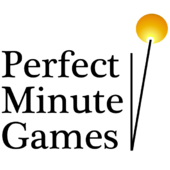We started in the railgun post, but this is probably substantial and common enough for its own thread.
quote:
Original post by Dauntless
Kangaroo-style? Like hopping motions? Or more like AT-ST style backwards-knee motion?
For hopping motions, I''d imagine the stress on the joints would be even greater due to the jumping movements.
I intended hopping motion, yes, with backwards knee to boot. For a large kangaroo, which might weigh in excess of 200 pounds, the mechanics are very easy. Even the delicate "ankle" joint (really the equivalent of our base toe joint) doesn''t fail, which leads me to believe it''s not a hard thing to design for.
Two other basic points I have to make at this juncture:
1) I wouldn''t consider mechanical failure a major problem - in the case of this type of technology, you''re talking about materials that will be far stronger, with tensile strength of "ligaments" on the order of buckytube weaves (~30x tensile strength of steel) and compressive strength of the "bones" on the order of diamond (~100x compressive strength of steel). So the body is lighter, and the joints are far stronger, than might otherwise be true.
2) Assuming that you DO consider mechanical failure, you''re landing with two feet, so your stress load per joint is lower, and if you design your hopping motion correctly, it is amortized over a much greater distance, so the net effect is much lower than you might think. Stability is much greater and stress much lower when standing than in the normal situation, since you have basically a tripod in standing position, although blowing off the tail makes things a lot worse for the pilot, of course. But then, blowing off a leg makes things bad in any case. the secret is to avoid that possibility by making dodging easy, ergo high-speed hopping.
quote:
So as for four legged designs, I''ve given this some thought too. Four legged designs would be even better at crossing rough terrain, and could move laterally as well making it harder to track like you said. Plus, in a spider like form, you can make the main chassis hug the ground much more closely. Again, with my designs, they are only about 10-12'' off the ground, though since they are a little longer are more massive than the ExoShells.
I like fast four-leggers like cheetahs, less flexible in pure directional terms but far easier to design for speed and lethality.
quote:
Just on a side note...in my game universe, pilots have to interface with the machine through bio-feedback mechanisms. This requires them to be put in a VERY strange and unusual cockpit. The cockpit is actually a sensory deprivation chamber that is flooded with a gel. A side benefit is that the gel bath acts as a concussion dampener, so that fairly extreme drops, jumps and kinetic weapon damage don''t stun the pilot inside. It is also very effective if flame weapons are used so that the pilot doesn''t get cooked inside (and the oxygen gets recycled in an internal compartment if the temp goes to high).
This is an interesting concept, and one I''ve toyed with as well. When we used to play Rifts PnP I came up with a scheme wherein the pilot is, as you say, immersed in a gel (mine is oxygenated, much like the one from
The Abyss), and a nanotech ''tap'' splices into his spine just below the brainstem, so for the duration of play, the pilot IS effectively the machine.
Since in Rifts the player is augmented a great deal when piloting a mecha (and in a number of other situations), I also tried to come up with a scheme (for a Rifts MMOG) where the player would gradually ramp up in reactive speed as their level increased. It seems, however, that the only way to do it well is to give the computer some autonomous control in those situations, so that it can do some "dodging". I didn''t think this would work, but I understand it may have been used in Heavy Gear to good effect, so what do I know?
quote:
The disadvantage and side-effect to this control scheme is that the pilot can develop psychological problems after long exposure...typically resulting in megalomania (he starts thinking he''s as powerful as the machine) or in agoraphobia (he becomes afraid when he leaves the protection of the machine).
I imagine this takes quite a game design to support, however. Have you mapped it back to the player? I''m fascinated with the thought of how this would affect things in game terms.
thanks,
ld






